To keep algae at bay in your furry friend’s water bowl is akin to maintaining a crystal-clear pond in your backyard oasis. The key lies in implementing effective strategies that prioritize cleanliness and proactive measures.
By choosing the right bowl material, adopting a regular cleaning routine, and strategically placing the bowl away from direct sunlight, you can create an environment that discourages algae growth and ensures your dog’s hydration source remains fresh and safe.
But there’s more to uncover beyond these basics; discover advanced tips and natural remedies to safeguard your canine companion’s health and well-being.
Key Takeaways
- Use stainless steel or ceramic bowls to prevent algae growth.
- Clean daily with warm, soapy water to maintain water quality.
- Place bowls in shaded areas to avoid direct sunlight.
- Incorporate natural algae inhibitors like apple cider vinegar for prevention.
Importance of Algae Prevention
Preventing algae in your dog’s water bowl is paramount for safeguarding their health and well-being. Algae growth in the water bowl can pose serious health risks to your furry friend, including dehydration, digestive issues, allergies, and sensitivities.
Regular cleaning and maintenance of the water bowl are crucial steps in preventing algae buildup. Neglecting to clean the bowl can lead to respiratory distress, lethargy, and gastrointestinal problems in your dog.
To ensure a clean water source and prevent algae contamination, it’s essential to select the right bowl material. Stainless steel or ceramic bowls are recommended as they can help deter algae growth.
Selecting the Right Bowl Material
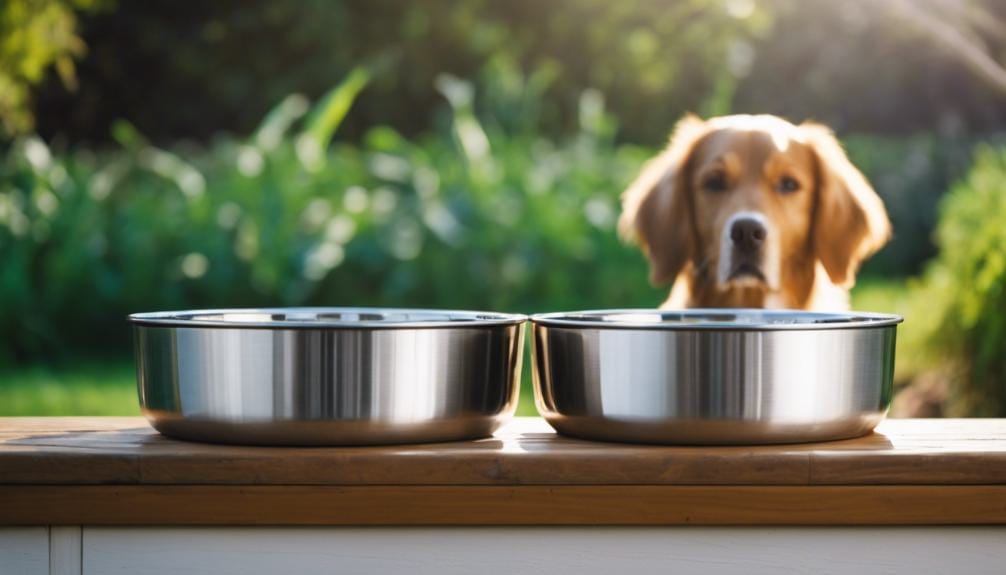
To maintain a clean water bowl and prevent algae growth, opt for stainless steel or ceramic bowls as ideal choices due to their non-porous surfaces. Stainless steel and ceramic bowls are more hygienic options compared to plastic bowls, as the smooth surfaces of stainless steel and ceramic make cleaning easier, reducing the likelihood of algae formation. Plastic bowls should be avoided since they scratch easily, creating grooves that promote algae buildup. By choosing stainless steel or ceramic bowls, you ensure a cleaner water bowl environment for your dog, maintaining water freshness and preventing algae-related health risks. Here is a comparison table highlighting the key differences between stainless steel, ceramic, and plastic bowls:
| Bowl Material | Non-Porous Surfaces | Smooth Surfaces | Hygienic | Algae Buildup |
|---|---|---|---|---|
| Stainless Steel | Yes | Yes | Yes | Low |
| Ceramic | Yes | Yes | Yes | Low |
| Plastic | No | No | No | High |
Cleaning and Maintenance Tips
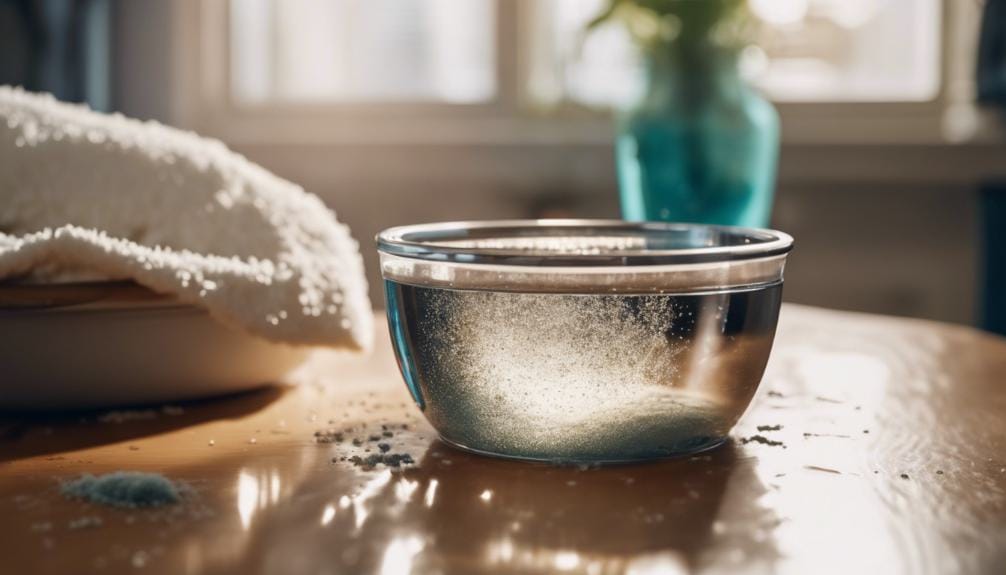
For optimal cleanliness and hygiene, ensure to scrub your dog’s water bowl daily with warm, soapy water to eliminate any algae buildup effectively. To prevent algae growth and ensure your dog is drinking clean, fresh water, follow these essential cleaning and maintenance tips:
- Rinse Thoroughly: After scrubbing the bowl with warm, soapy water, make sure to rinse it thoroughly to remove all soap residue. This step is crucial in preventing algae growth.
- Boil Metal Bowls: Periodically boiling metal bowls helps sanitize them and eliminate any potential algae contamination. This extra step can ensure a hygienic environment for your dog.
- Monitor Regularly: Keep an eye on the water bowl for any signs of algae growth or slime. If you notice any, it’s essential to clean the bowl immediately to maintain a clean water source for your dog.
Strategic Placement for Sunlight Avoidance
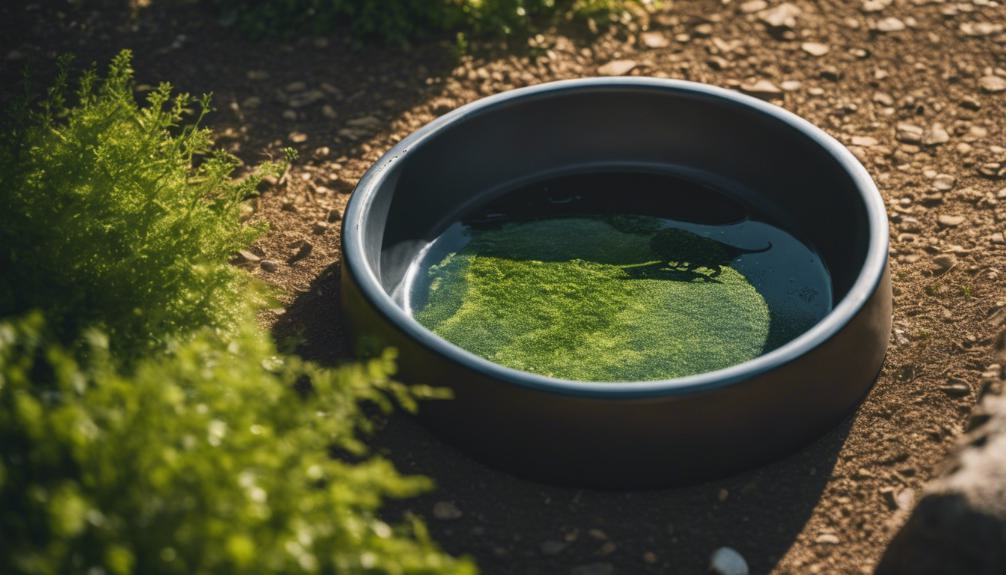
To maintain a clean water bowl for your dog, ensure strategic placement in shaded areas to prevent algae growth facilitated by direct sunlight.
Placing the bowl in areas that receive shade helps inhibit algae proliferation by minimizing sunlight exposure, as algae tend to thrive in well-lit environments.
By opting for shaded locations, you can effectively prevent algae formation and maintain a pristine water bowl for your furry friend.
Strategic placement away from direct sunlight is crucial in the battle against algae, as sunlight avoidance plays a key role in keeping the water bowl free from these unwelcome green invaders.
Utilizing Algae Inhibitors and Repellents
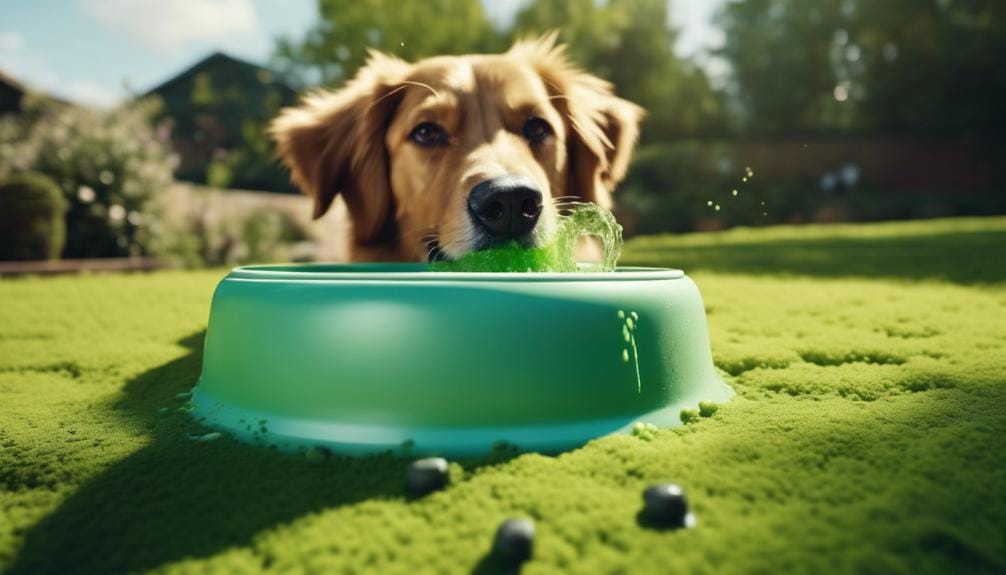
Consider incorporating apple cider vinegar or lemon into your dog’s water bowl as natural algae inhibitors to maintain water quality and discourage algae growth. These natural substances create an environment hostile to algae, effectively preventing its formation and ensuring clean and safe water for your furry friend.
Tips for Utilizing Algae Inhibitors and Repellents:
- Apple Cider Vinegar: Add a small amount of apple cider vinegar to the water bowl to deter algae growth and improve water quality.
- Lemon: Squeeze some fresh lemon juice into the water bowl as an alternative natural algae inhibitor to keep the water clean and safe.
- Consistent Use: Regularly incorporate apple cider vinegar or lemon into your dog’s water bowl to maintain their effectiveness in preventing algae formation.
Frequently Asked Questions
How Do I Keep Algae From Growing in My Dogs Water Bowl?
To keep algae from growing in your dog’s water bowl, use stainless steel or ceramic bowls, clean daily with mild detergent, avoid direct sunlight, add a bit of apple cider vinegar, and refill with fresh water daily to prevent algae buildup.
How Do I Keep My Dogs Water Bowl From Getting Slimy?
To keep your dog’s water bowl from getting slimy, clean it daily with warm soapy water. Use a designated sponge or brush to scrub off any residue. Boil water and pour it over the bowl for sanitizing.
How Do You Keep Algae Out of Animal Water?
To keep algae out of your pet’s water, use stainless steel or ceramic bowls, clean daily with mild detergent, avoid direct sunlight, add a bit of apple cider vinegar, and regularly empty, clean, and refill the bowl.
How Do I Keep Mold Out of My Dogs Water Bowl?
To keep mold out of your dog’s water bowl, clean it daily with hot, soapy water. Use a dedicated sponge and sanitize weekly in the dishwasher. Ensure the bowl stays dry and clean always for your pet’s health.
Conclusion
In conclusion, preventing algae in your dog’s water bowl is crucial for their health and well-being. By choosing the right bowl material, regularly cleaning and changing the water, keeping the bowl out of direct sunlight, and using natural algae inhibitors, you can effectively maintain water quality.
Remember to monitor your dog for any signs of algae-related health issues and seek veterinary care if needed. Prioritizing these strategies will help ensure your dog stays healthy and hydrated.

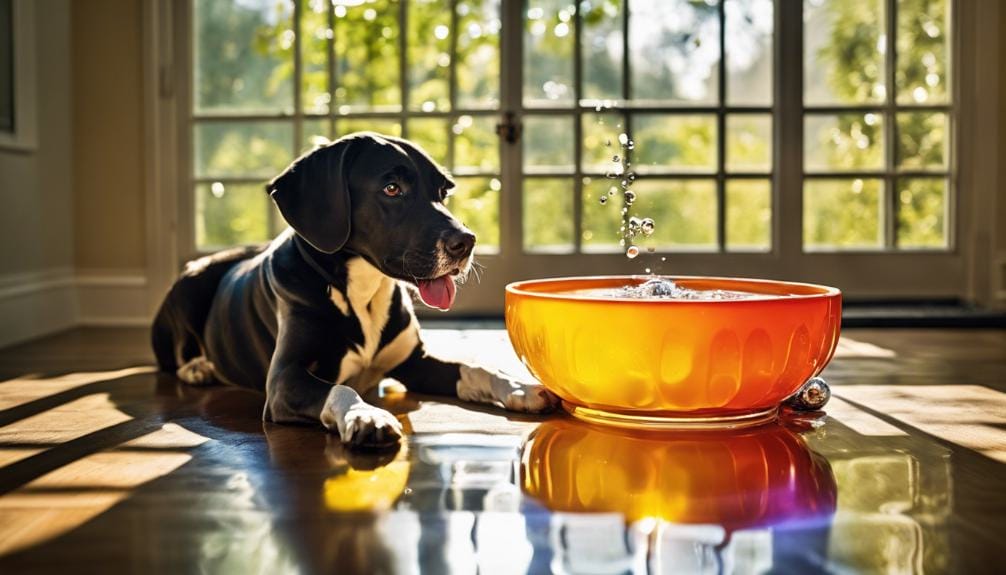
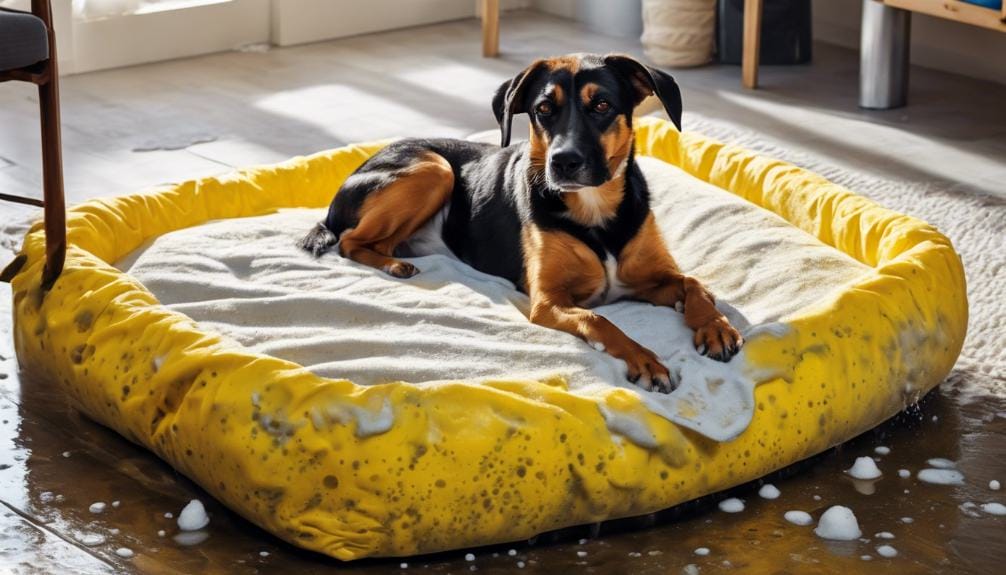
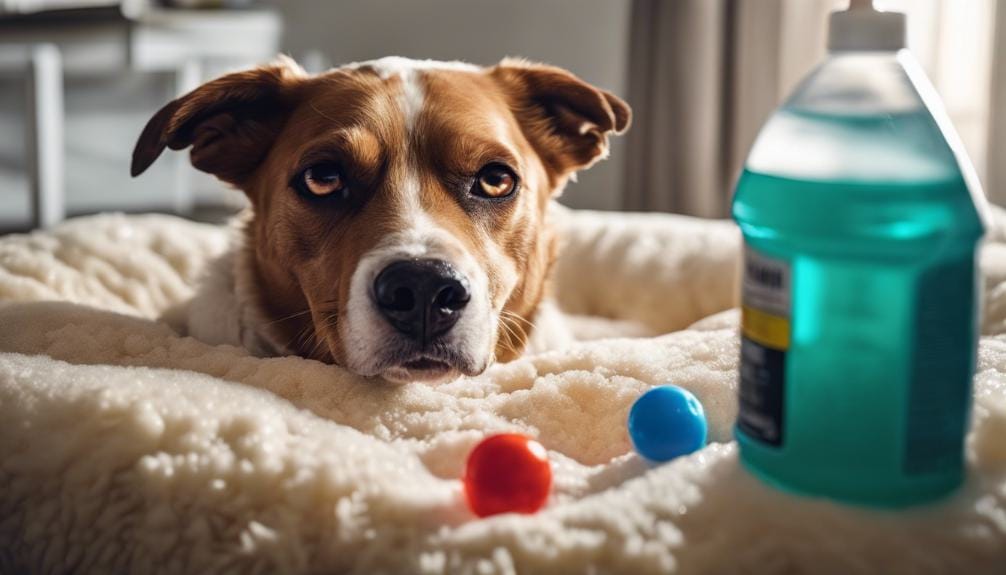
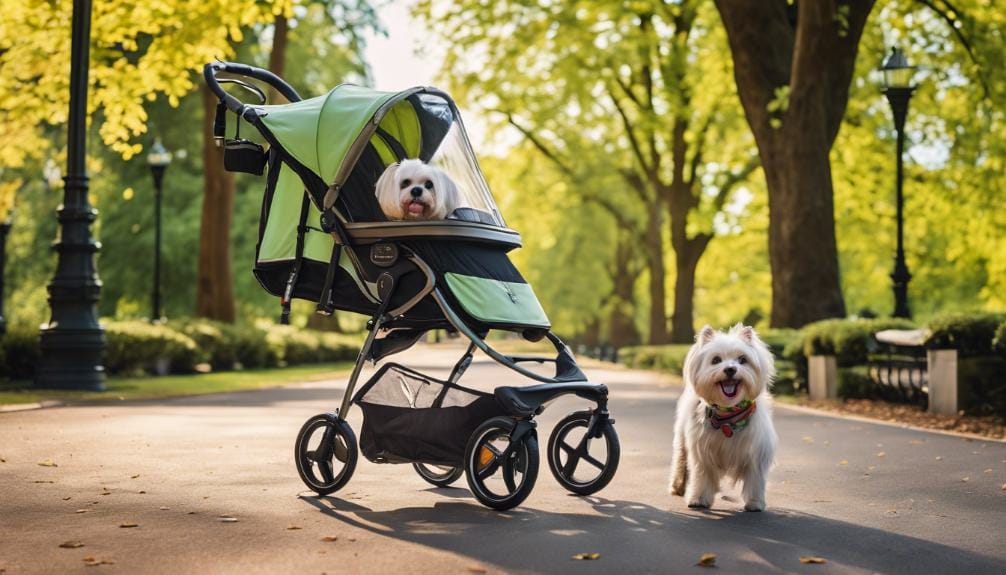
Leave a Reply
You must be logged in to post a comment.